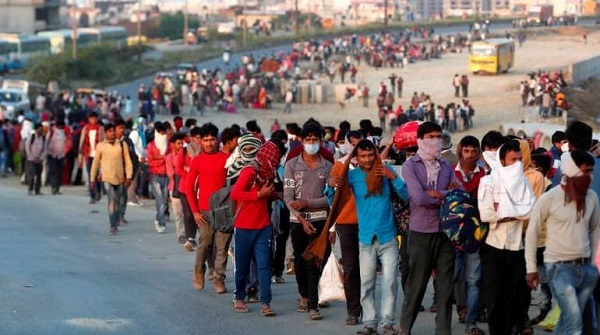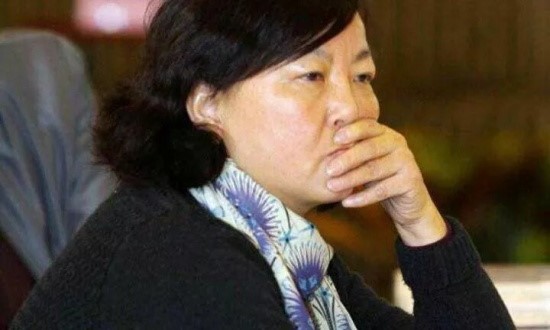Mahesh Kumar Kamtam, Research Intern, ICS
Today the world is witnessing an outbreak of a pandemic ‘COVID-19’, unseen in the recent past, illustrating the fragile nature of a globalized world. As the virus outbreak continues to create global reverberations, the case of ‘COVID-19’ becomes even more relevant to the Communist Party of China (CPC). The pandemic could put the regime in a precarious position, threatening the unwritten social contract between CPC and Chinese people, since the legitimacy of the Party is driven by its ability to deliver economic prosperity to its citizens.
China is more connected to the world today than in the past. According to the World Economic Situation and Prospects Report 2020, released by the United Nations Commission on Trade and Development (UNCTAD), China alone contributed 0.75 percent out of an average 3 percent of the global growth. These indicators not only reflect a major trend in globalization, but also the extent to which China is connected in a globalized world. Global economic integration has driven China’s domestic growth in the past. But with global growth set to slow down significantly due to COVID-19, early predictions show signs of recession. As the IMF rings alarm bells on a possible recession, CPC is set for more challenging times as the world enters an era of instability driven by COVID-19.
Increasing global integration and complex challenges due to globalization have domestic repercussions. The inability to maintain economic growth and rise in inequality fuelled by low growth in future are more immediate threats that could undermine the social contract between the people and the Party causing domestic instability. The rise in ‘uncertainty’ casts a shadow of doubt on the goals set forth by the Party, particularly when China is entering into a “New Era”—where Xi Jinping targets to achieve a “moderately well-off society” (Xiaokang society) by 2021— the hundredth anniversary of the formation of CPC.
What is more worrying for the CPC at the moment is the echoing of the anger from Chinese people themselves against Xi’s rule. Xi has been facing criticism of his handling of the COVID-19 crisis and social stability threatened by a slump in production are one of the biggest challenges that CPC is set to face in the next few years. Although CPC has shown the ability to manage ‘domestic uncertainties’ by delivering economic results, mastering propaganda and controlling the flow of information in the past, these strategies are becoming increasingly ineffective for ensuring legitimacy of the Party and its leadership.
There was mounting discontent among Chinese citizens in the early stages of the outburst of COVID-19 as local officials tried to hide the truth about the outburst. The death of Li Wenliang, the doctor who alerted Chinese local officials during the early stages of the virus outbreak, became a breaking point. Li was forced into silence by local officials who hid the truth about the outburst. This event led to widespread discontent among netizens. Popular social-network sites Sina Weibo and WeChat surfaced with the lyrics of a song, Do you hear the people sing” popularized during the Hong Kong protests in 2019, denoting public anger and failure of early response to COVID-19. CPC blocked the ‘anthem of protest’ in mainland China and subsequently, launched a massive propaganda operation to regain lost legitimacy. Eventually, it was forced to sack Hubei Party chief Jiang Changling and Wuhan mayor Ma Guoqiang in an attempt to calm down public anger and channelize resentment away from the Centre while trying to alleviate growing citizen distrust of the central leadership and Xi, in particular.
The newly appointed Provincial Secretary of Wuhan launched a “gratitude education campaign” during the outbreak, to create a favourable impression of party’s image in fighting COVID-19. However, it backfired as the Party was criticized for placing itself above the hardship endured by Wuhan residents. They were enraged because of poor conditions in hospitals, lack of adequate timely care and soaring food prices. In yet another instance, real estate tycoon and princeling, Ren Zhiqiang penned a powerful article that got circulated on Weibo. He was critical of Xi’s handling of the COVID-19 crisis and called him “a clown with no clothes on who was still determined to play emperor”.
These incidents provide early indications of Xi losing control over the CPC narrative and thereby, his legitimacy to lead. However, Jude Blanchette, Director of China Studies program at the Center for Strategic International and Security Studies argues that the “CPC has reoriented itself from time to time to meet the changing demands in the society and CPC is more focused on ‘long-term threats’ than the short term disruptions like COVID-19 crisis”.
Indeed, it is true to some extent that COVID-19 may be a short-term disruption rather than a long-term threat to the stability of the Party and Xi’s leadership. The mounting discontent against the state is a sporadic outburst of anger rather than a sustained and coordinated movement challenging the ‘Party’s mandate to rule’. However, we can still expect that it could bring more democratic order in Party though not necessarily democracy, by furthering “intraparty regulations”, promoting information disclosure particularly by local party offices at the time of emergency crisis like COVID-19, thus pushing for more transparency in the Party.
This article was earlier published in The WION under the title ‘Communist Party of China and the crisis of social contract in a globalised world’ on 13 April 2020.

